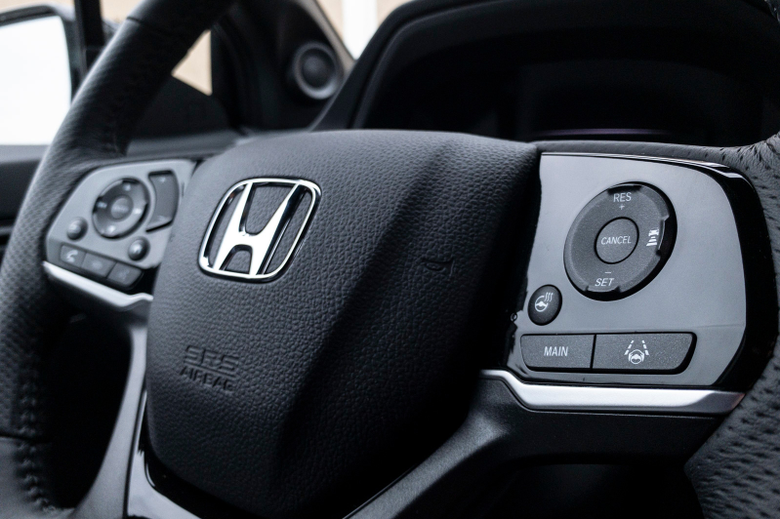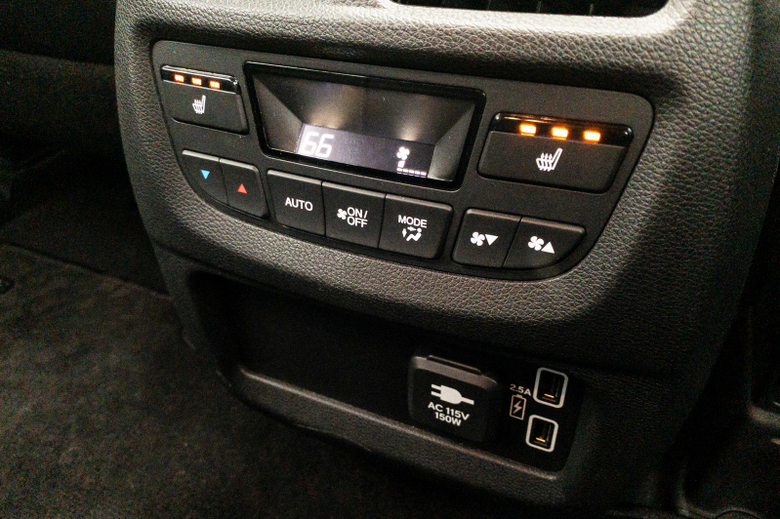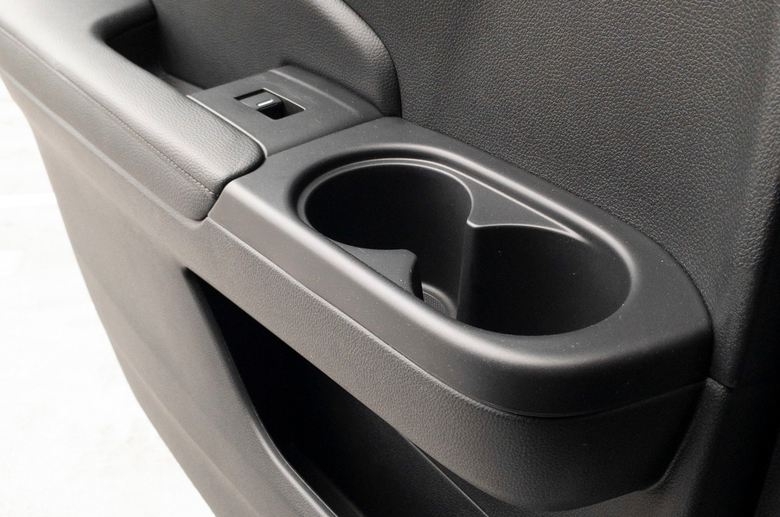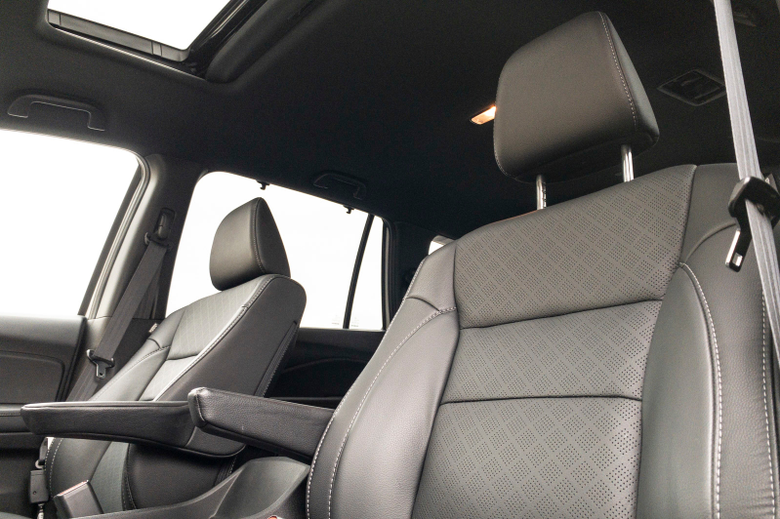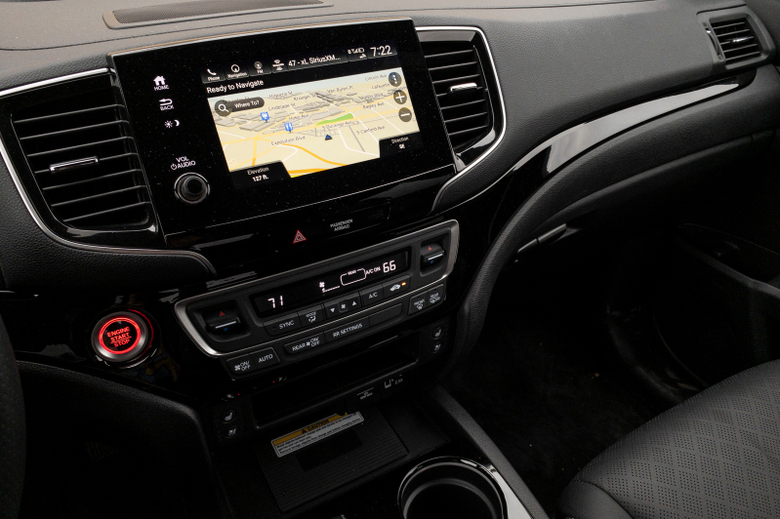The 2019 Honda Passport Is A Solid Casual Adventure SUV
The 2019 Honda Passport has been heavily marketed as off-roady and adventurous. In reality, it can't really do anything other small-medium SUVs can't, but it's a well-designed vehicle. If your expeditions are mostly around town and on the highway with some dirt miles in the mix, it's hard to beat.
(Full Disclosure: I asked Honda's PR people if I could test a Passport and they were kind enough to hook it up. The vehicle I borrowed for a week came sparkling clean with a full tank of fuel.)
The name "Passport" is resurrected from an era when Honda couldn't be bothered to make light trucks, but still wanted to sell them. You might have recognized an O.G. Passport as a redressed Isuzu Rodeo.
But that mid-'90s Passport was a decently capable machine. It wore its spare tire as a backpack like a proper off-roader and everything. Similarly, the generally forgotten Acura SLX was a cosmetically upgraded Isuzu Trooper.
And if you want to go deep into Honda SUV history you might dig up the Crossroad—an early Land Rover Discovery (yes, really) rebadged with "H" emblems for a brief stint in the Japanese market, back when Honda was doing all sorts of weird tie-ups with Britain's Rover.

But today, Honda knows better than to slap its label on some stick-axle trucks and hope for a cheap ride on the seemingly un-crashable wave of SUV popularity. The 2019 Passport feels like a Honda in all the right ways.
And it still looks rugged too, especially if you squat near its plastic pieces of body cladding and squint a little.
What Is It?
It'd be easy to say that the Honda Passport is basically a Honda Pilot made a little smaller, but if you're not into cars, that won't help you much.
It has seating for five, but a comfortable five, and a generous cargo bay behind the second row of seats. It's a fairly unembellished A-to-B machine that's set up to cope with pretty much any conditions you'd encounter on mapped roads, including unmaintained dirt ones.
Direct competition includes other similarly sized two-row SUVs like the Jeep Grand Cherokee, Ford Edge, and the new Chevy Blazer. But you might also have this car in mind if you're looking at Subaru Forester, or even something a little smaller like a Nissan Rogue.
Specs That Matter
The Passport actually does have the same exact wheelbase as the three-row Pilot: 110 inches between the axles. But since this SUV doesn't have way-back seating, total length is a little shorter at 190.5 inches.
The cheapest variant, the front-wheel drive Sport, starts at about $32,000 and ships with Honda Sensing driver assistance tech. At the top of the range is the all-wheel drive Elite which gets wireless phone charging, a heated steering wheel and cooled seats among other things. That one rings up at about $44,000 and there are two other trims in between giving the Passport a pretty broad range of equipment levels. The fender flares are part of an "Adventure Package" that costs about $3,000 to add.
You can have a Passport in front or all-wheel drive, but every trim runs the same 3.5-liter i-VTEC V6 that Honda says can kick out a healthy 280 horsepower and 262 lb-ft of torque. That'll be hooked up to a nine-speed automatic transmission regardless of which drivetrain you pick. A simple push-to-select shifter on the console changes gears.
The all-wheel drive version claims 21 mpg in combined driving.

The Passport's best party trick is its optional i-VTM4 torque-vectoring all-wheel drive system, which "actively proportion[s] torque to the wheel that can best use it," according to Honda. It's partially controlled by a manual terrain-response system that lets you cycle through drive modes (for sand, snow, mud, and paved roads).
Picking a terrain of choice there preempts the traction control to behave the way you want it to in those respective conditions. For example, Sand mode allows for a little wheel slip so you can stay on the power through soft stuff while Snow mode deadens throttle response so you're less likely to break traction.
In my test loop over highways and some dirt roads near Big Bear Lake, the system did seem to do a good job keeping the car from wasting energy or getting stuck. What it cannot make up for, however, is the Passport's on-road biased architecture.
What’s Great
Honda's doing a great job building cockpits that are intuitive and robust-feeling lately. There's just something about the haptics of the buttons and the way things click and snap that makes the whole car feel durable.
This seemingly trivial attribute kind of ends up defining the whole Passport experience. It seems tough without being chunky, which is probably exactly what Honda's interior designers were going for.
The interface design isn't particularly elegant but it's very easy to understand, and there are enough storage pockets for your kids to stash whatever it is kids are always losing anywhere and everywhere. Cup holders are pretty much molded into every spot one might be inclined to place a beverage.
The aura of resilience baked into the Passport gives regular driving a whiff of adventure; the Toyota 4Runner and Jeep Wrangler accomplish this to a much greater degree but they're also a lot less efficient and a little rougher around the edges.
I already sang the praises of the i-VTM4 traction control system, but the Passport's welcoming interior layout, good visibility, and comfortable seating were what stood out.
Since it's built more like a car than a truck, it really is pleasant and gentle to drive on long hauls and around town. It's much sharper to turn than a body-on-frame SUV or truck and doesn't wander out of highway lanes at all.
What’s Weak
With an aggressive set of all-terrain tires, I bet a new Passport could power through the fiercest of snowstorms, not-too-deep sand, and even mild mud without causing the driver much distress.
But that would eat away at the car's efficiency and impressively unintrusive road noise. And, ultimately, wouldn't be enough to compensate for the Passport's lack of suspension travel.
The tautness that makes the Passport so nice and smooth in street driving becomes a real pain in the pants as soon as you leave the asphalt. Those Big Bear dirt roads I mentioned earlier were no trouble for traction, but force you down to extremely low speeds if you don't want to feel like you're being dragged behind an ocean liner on an inflatable tube.
Verdict
I really liked driving, and riding in, the 2019 Honda Passport. The best thing I can say about it is that it successfully sells the sizzle of adventurousness that attracts so many people to SUVs without taxing you with the harsh realities of truck driving.
Put another way, the Passport seems to achieve the bare minimum of off-road capability to be qualified as "rugged." But, in real life, that's exactly what you want, because it also means this car has the maximum on-road politeness that will keep you from getting fatigued and spending too much on gas for daily driving.
If the Toyota 4Runner is a gold standard for what I might call "70 percent off-road, 30 percent on-road" of overland SUVs, the Honda Passport is its flipside. So come for the plastic body cladding and terrain-response traction control, stay for the refined ride quality and fuel economy that generally stays above the teens.




